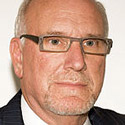11:14 AM
Follow The Money: Transform Your IT Supply Chain
With somewhere between 48% and 62% of total IT expense flowing outside firms to vendors, the IT supply chain and associated contracts determine an organization's technology economics.
The terms of the contracts themselves, specifying duration, termination conditions, fees, costs, volumes, service levels and such, play a major role in shaping the foundation of a company's “fixed versus variable” cost structure.
The built-in assumptions underlying these contracts - such as that volumes will grow and unit costs will decline at the rate of current technology advances - were likely sound at the time the deals were done, but are likely not valid in the long-term. And the very nature of many past contracts, with long terms and termination penalties, renders them an impediment for companies that need to transform their technology economies to adapt to the new normal of the financial services sector. As such, organizations trying to move forward are more likely to spend time trying to break old contracts as the vendors attempt to hold on to them rather than being able to work rapidly towards their new operating models.
To avoid a future that repeats the past, organizations need to establish core tenets for how they approach contracts and manage the IT supply chain. And at the same time, vendors -- on the sell side -- must rethink the constructs that underlie their contract terms, and get with the program of what the buy-side needs. They need to have new offers ready for new times. Otherwise they will be bound in contention with their long-term customers and leave the proverbial door open to switching and creating opportunities for competitors who have been better able to adapt to the current economic reality.
Follow the Money to Size the External Flows
"Follow the Money" is an interesting phrase. It played a major role in the nation's politics in the Watergate era and was cited in the 1975 book, "Crime in Britain": "Always follow the money. Inevitably it will lead to an oak paneled door and behind it will be Mr. Big. It is a tip that has paid off in many cases".
In Technology Economics, this guidance is proving to really pay off -- especially in the area of assessing the potential to reshape an organization's technology economics by transforming the operational model of its IT supply chain and contracting foundations.
A typical "Follow the Money" stack for IT expense in a typical big bank

It is definitely not a surprise that labor costs are around 45% of IT expense.
But if you apply ‘Follow the Money” from a slightly different vantage point, you can follow the money inside and outside the firm.

In most large firms, 48% or more of IT expense flows out into the IT supply chain. In other words, it leaves the firm.
Looking at these figures another way, a bank with a $5 billion IT budget may have $2.5 billion annually flowing through its vendor contracts. If that same bank has 2 billion shares of stock outstanding, its IT external costs are worth about $1.25 per share -- that is an astounding number relative to the earnings per share of many institutions.
Follow the Contracts
As money leaves the firm, the dynamics of these expenses are controlled by contracts -- some long term, some short term, some with onerous termination clauses, some with minimum volume requirements. In addition, the longer the term of the contract, the more likely that the contract terms themselves did not foresee the current state and needs of IT in the financial services sector.
The majority of contracts, whether for hardware, software, labor, market data, data center space or telecommunications services are based on assumptions and economic models that no longer stand the test of time. And perhaps even more constraining is the fact that compensation for the vendor sales and account teams is tied to these outdated models that are the foundations of the contracts.
As the needs for the future change, front line sales teams just don't want to let go of the past. Therefore just as companies need to move forward and transform IT with new operational models, new models of consumption and the introduction of new technologies, they are constrained by current contracts and supply chain practices. But worse, as companies have a need to decouple from past deals to move forward, they are faced with contentious debates and negotiations with their vendors and suppliers. Massive energy and time is spent unraveling the past while opportunity for rapid movement to a new future is lost.
Similarly the principles used by IT organizations for the management of their IT supply chains are likely inappropriate for current business and IT needs of economic agility, leverage, and the rate of technology change and innovation. The "art of the deal" is no longer about low unit cost and increasing volumes over time -- it is about agility, speed, service quality, and leveraging supplier capability and experience. Dr. Howard A. Rubin is a Professor Emeritus of Computer Science at Hunter College of the City University of New York, a MIT CISR Research Affiliate, a Gartner Senior Advisor, and a former Nolan Norton Research Fellow. He is the founder and CEO of Rubin Worldwide. Dr. Rubin is ... View Full Bio






















